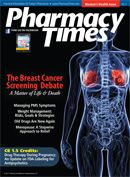Publication
Article
Pharmacy Times
Drug Diversion and Abuse: The Silent Problem in Health Facilities
Author(s):
Pharmacists hold the key to detecting and reporting the often overlooked crimes of drug diversion that are perpetrated hospital and nursing personnel.
Pharmacists hold the key to detecting and reporting the often overlooked crimes of drug diversion that are perpetrated hospital and nursing personnel.

Unfortunately, the all-too-common secret in health facilities involves the direct diversion of prescription drugs. This can occur in more than 1 way, as most pharmacists know, but the bulk occurs directly on the patient floors or in the operating rooms of hospitals. Although nursing personnel account for the majority of the pharmaceutical thefts from health facilities due to their sheer numbers and access to controlled substances, pharmacists also play a crucial role in this problem.
Monitoring Use
Certainly, diversion within the hospital pharmacy can happen, but pharmacists typically hold the key—along with nurse managers—in detecting, following up on, and reporting these crimes. Of course, in the hospital setting, where there is a pharmacy on-site, pharmacists also have the corresponding responsibility to ensure that the prescription drugs are being administered as was ordered by the prescriber to the ultimate user, the patient.
In the nursing home arena, outside pharmacies are typically the ones that supply and monitor the constant flow of pharmaceuticals into the facility and what medications are administered to the patient. These pharmacists are very knowledgeable about the nursing home flow of all drugs, including controlled substances. They are usually very diligent in uncovering inconsistencies when it comes to drug diversion issues. It is essential that these pharmacists continue to be diligent in finding these discrepancies.
Finding Discrepancies
Over the years, pharmacists in both settings have many times been the catalysts in pursuing someone who is diverting controlled substances in either the hospital or nursing home setting. It is essential that these pharmacists continue to be diligent in finding these discrepancies— and then relentlessly pursue them until they are legitimately resolved. If this means the end result is a strong possibility that diversion has occurred, then pharmacy, nursing management, and the administration need to move swiftly with law enforcement to bring the issue to a conclusion.
Every day that an appropriate investigation is delayed puts patients in potential danger. Any delay also makes it a little more difficult to ultimately provide effective rehabilitation for the abuser. This doesn’t mean haphazard investigations that often tend to implicate the wrong offender should be conducted, but the team needs to move decisively toward resolving the diversion.
Health Facility Training
As president of the National Association of Drug Diversion Investigators (NADDI), I have long wanted to offer a training conference that deals specifically with the diversion of prescription drugs in health facilities. This would not be a conference just for law enforcement, but for all of the entities that can and do become involved in these offenses.
I am glad to report that this training is to take place October 5 to 6, 2011, in Mason, Ohio, just north of Cincinnati, at the Great Wolf Lodge, under the auspices of NADDI. Registration fees are nominal at $149 for the 2-day program and a $92 room rate for this outstanding facility.
Some of the most experienced speakers on this topic from across the United States are coming together to offer a training session of exceptional quality. As I write this column, NADDI is attempting to obtain continuing education credits for both nursing and pharmacy for this conference. Once these are obtained, we will detail that information on our Web site. [Note: Since publication, NADDI has announced that pharmacists participating in this conference will be eligible for 12 Continuing Education credits.]
For more information about this first-ever conference, go to www.naddi.org and click on the “Health Facility Diversion” training to learn more about the speakers and the topics.
If your job in any way deals with this persistent problem of drug diversion in health facilities, I urge you to sign up and not only learn at this conference, but provide valuable input to other attendees. Such interaction will allow everyone to go back to their place of employment and do a better job of dealing with this allimportant issue.
If you have any questions about this conference or any other issue on pharmaceutical diversion, don’t hesitate to e-mail me at burke@naddi.org or the e-mail address below. PT
Cmdr Burke is commander of the Warren County, Ohio, drug task force and retired commander of the Cincinnati Police Pharmaceutical Diversion Squad. Cmdr Burke is a 40-year veteran of law enforcement and the current president of the National Association of Drug Diversion Investigators. He can be reached by e-mail at burke@choice.net, via the Web site www. rxdiversion.com, or by phone at 513-336-0070.







